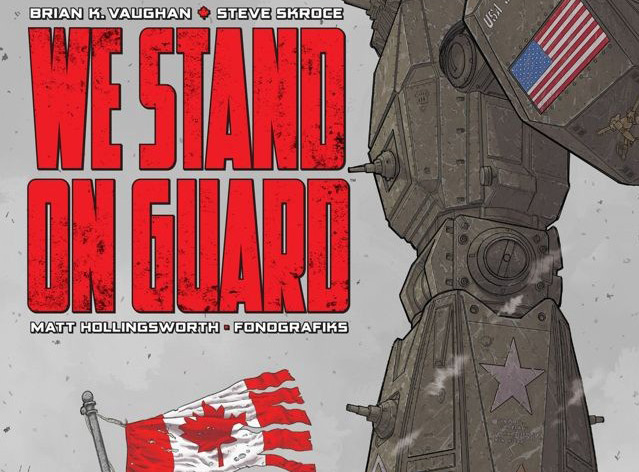Crash’s Best and Worst Comics of 2015

When Nerd Caliber approached me to write an article about what I felt had been the best and worst comic of 2015, I admittedly had considered refusing on the grounds that I my current cost of my pull list rounds up to almost thirty dollars a month. Trying to pick out which of the two out of the hundred would make my cut would have been a daunting task. I had to whittle down an impressively large list in the vain hope of providing something tangible for readers to digest.
I decided that I simply could not write about one comic as I felt that would have been a disservice so instead I picked two runs for best comic. Picking the worst comic of 2015 had also been an issue as I simply could not focus on one comic when an entire arc/run easily eclipsed any individual series.
The Best
It was a tie between Deadly Class and We Stand on Guard. Both were comics that had fantastic plots and beautiful world-building while touching on topics that most major publishers would skirt around. In the case of We Stand on Guard, we have a miniseries written by Brian K. Vaughan and artwork done by acclaimed artist Steve Skroce that focuses on an invasion of Canada by the United States as seen through the eyes of a young Canadian woman and her fellow rebellious civilians. The explanation for the invasion is a slow burn topic that builds as the story progresses but does a wonderful job of only teasing bits and pieces while carefully shaping the narrative.
Most publishers are seldom willing to paint the USA in a negative light but We Stand on Guard does an excellent job of showing an alternative future where the world’s biggest superpower has spiraled out of control and desperate measures coupled with political pressure has forced it to wage a war on its neighbor to the north. Instead of facing an army, they face a band of civilians who are fighting for more than just their land but also for their very freedom to live on them.
On the other hand, we have Deadly Class — an ongoing series by Rick Remender with art by Wes Craig which focuses on a homeless teenager by the name of Marcus Lopez who wanders the streets of San Francisco until he is recruited into King’s Dominion School of the Deadly Arts, a secret school where those in the underworld send their children to learn skills like assassination. The story introduces a dynamic range of characters that are fully fleshed out and incredibly diverse. Students from all over the world are represented in the series which include children from Mexican cartel lords, Japanese Yakuza, Chinese Triad and White Power groups. The students engage with one another to be the best in their classes while also handling personal vendettas.
Marcus represents the visual medium used to guide the reader through the story and yet the writer also occasionally chooses to redirect the focus onto small incidents which paint a more compelling view of the world. Some panels linger in an artistic sense like the Day of the Dead parade or their lingering view on punk music while at a concert. A lot of the writing is snappy and able to keep the reader entertained not only with the course plotted by the writers but also with various callbacks to pop culture life style of the ’90s.
The Worst: All of Convergence
It’s difficult to break down individual comics within the Convergence crossover from DC, as some of the one/two issue arcs were written in such a way to wrap up old canceled stories while also reintroducing displaced characters back into the new “anything goes/back to basics” universe that DC has recreated with its mini reboot. DC attempted to streamline the continuity of their universe for a second time post Flashpoint event. The overarching story took on a battle world sort of approach with different versions of Gotham city having been pitted against each other by a being known as Telos who served the god-machine Brainiac.
The execution of Convergence was very sloppy and lacked a clear overview of the various plots. Many stories lacked a cohesive plot and some even dragged on without any sort of end only to abruptly stop mid-story to rush to an ending that seemed pushed into place at the last moment. It was clear that the idea of Convergence had intended it to be more of a fan service vehicle to bring wavering long time fans into the more modern era while introducing newer fans to the world that existed before the New 52 reboot. Instead readers were given mostly half baked stories and plots with the occasional gem hidden among them. The same could be said for Marvel’s (incredibly similar) event entitled Battleworlds/Secret Wars as both companies had similar ideas of isolated stories from various timelines in the vein of the old What If series of comics — or for DC, Elseworlds.
One can only hope that DC does not intend to do another mini reboot for a long, long time but instead will decide to allow their writers more creative control in their new story arcs and when another world event happens, the higher ups in DC build a much tighter storyline with consistent writing and plot development as opposed to a stale story with a weak development and lackluster ending.



